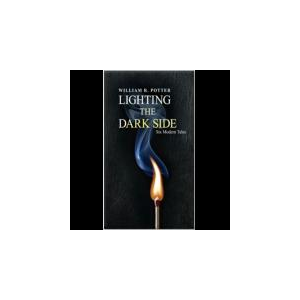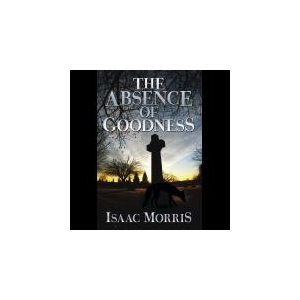The Samaritan's Secret
A member of the tiny but ancient Samaritan community has been murdered in the West Bank.The dead man controlled hundreds of millions of dollars of Palestinian governmentmoney. If the World Bank cannot locate it within the next several days,all aid money to the Palestinians will be cut off. Visiting Nablus,Omar Yussef must solve the murder and find the money, or allPalestinians will suffer. Meanwhile, he uncovers a deadly secret from his best friend's past.
The Story Behind This Book
The mystery of the Samaritans MOUNT GERIZIM, West Bank--It’s the year 3647. But on this exposed, blustery mountaintop overlooking the seething city of Nablus, the future seems a long way off. The Samaritans, a tiny remnant of a once powerful people, live here. They date their calendar from the year they believe their Israelite forebears arrived in the Promised Land three and a half millennia ago. In contrast, the Islamic calendar identifies this present year as number 1430 after the Prophet Muhammad emigrated from Mecca to Medina, while Jews calculate that we’re in the year 5769 after the creation of the universe. So the Samaritan year is about halfway between the Islamic and Jewish years. When you see how the Samaritans live, that seems about right. “We Samaritans could be a bridge between Israelis and Palestinians,” says Husney Kohen, a Samaritan priest who also runs a museum of Samaritan history in the village. “But no one pays attention to us, because we’re so few.” Only 740 Samaritans survive, descendants of the “Good Samaritan” about whom Jesus told his parable. In New Testament times, Samaritans were the dominant people in what’s now the northern West Bank, religious and tribal rivals of the Jews. Samaritans believe they’re keepers of the original Israelite faith. The Jews, they say, fell into no fewer than 7,000 errors of religious observance during their long exile in Babylon. The Samaritans stayed on their rocky hilltops and preserved the earliest extant Torah, the first five books of the Bible as written on sheep’s hide by Abisha, the grand-nephew of Moses. Their priests claim descent from the tribe of Levy, while the other Samaritan clans are the offspring of Joseph, whose tomb in the valley below is frequently a scene of violence between the Jews who revere it as the biblical dreamer’s burial place and the Palestinians of Nablus who wish to deny any Jewish connection to their city. Not everyone agrees with the Samaritans’ version of their history. Some researchers suggest they’re descended from Assyrians brought in to repopulate the area after the Babylonians drove out the Israelites. Over the centuries they were persecuted by Byzantine Christians, who destroyed their ancient Temple. The ruins now stand atop Mount Gerizim, just above the Samaritan village. (Look at some photos here: http://www.mattbeynonrees.com/ss_slideshow.htm) They were forced out of the ancient quarter of the Nablus casbah which still bears their name about 50 years ago, because their Muslim neighbors wouldn’t sell them land to expand their homes. Then, in 1989, they left Nablus altogether to escape the violence of the first intifada, building a new village on the ridge below the Temple. In Nablus, I’ve often heard people express suspicion of the Samaritans for their connections to Israel. They carry Israeli identity cards in blue wallets, as well as Palestinian i.d.s in orange plastic folders. Half their number live in Holon, an Israeli coastal town south of Tel Aviv. They speak Arabic and have Arab names (except for the priests, who’re all named Kohen), but they also learn Hebrew and give their children an additional Hebrew name for religious purposes, as many American Jews do. (Husney Kohen first identified himself to me as “Yeffet”, a fairly common name among Israelis.) On Saturday, their Sabbath, they speak only Samaritan, which they say is authentic ancient Hebrew. Most of their men are built tall and thin. On their stark hilltop, they cast long, narrow, mysterious shadows. “We’re between a hammer and an anvil,” the High Priest Yosef Abu al-Hassan Kohen told me, when I first came to the village in 1997. “The Muslims say we’re Jews. The Jews think we’re Arabs.” The High Priest, who died a few years ago, told me that several scrolls, including one that was 700 years old, had been stolen and smuggled to Jordan. He said he was asking Yasser Arafat to put up the $1 million ransom demanded by the thieves. Arafat treated the Samaritans well, even guaranteeing them a seat in the Palestinian parliament (since cancelled by current Palestinian President Mahmoud Abbas). But he didn’t like them well enough to hand over a million bucks. The old priest may have let something slip out inadvertently when he told me: “We could live very well on $1 million dollars.” After he said that, I wondered exactly how much the old man knew about the whereabouts of the scrolls. I suspected that Arafat, a canny type if ever there was one, had pondered the same thing. Three years ago, I returned to the Samaritan village. The old High Priest had died, but other villagers told me that the stolen scrolls had been returned. No ransom, they said, had been paid. That got me thinking. I based the plot of my new Palestinian crime novel The Samaritan’s Secret around the theft of an ancient Samaritan scroll. Instead of the blacks and whites with which journalism tends to paint the West Bank, I wanted to use the shape-shifting Samaritans to build a plot that would show the unpredictable, evasive reality of the place. In January, when I visited the Samaritan synagogue with Husney Kohen, he drew back a green silk curtain embroidered with golden Samaritan characters, to show me the Ark where the Torah scrolls are kept. “The Abisha scroll is behind this curtain, but you may not see it,” he said. “The oldest book in the world,” I said. “What about the scrolls that were stolen? They’re in there too now.” “No, no, no. They were never returned,” he said. Three times I visited, hearing three different versions of the same story. Remember 3647, 1430, 5769? That’s why I love Nablus.
















